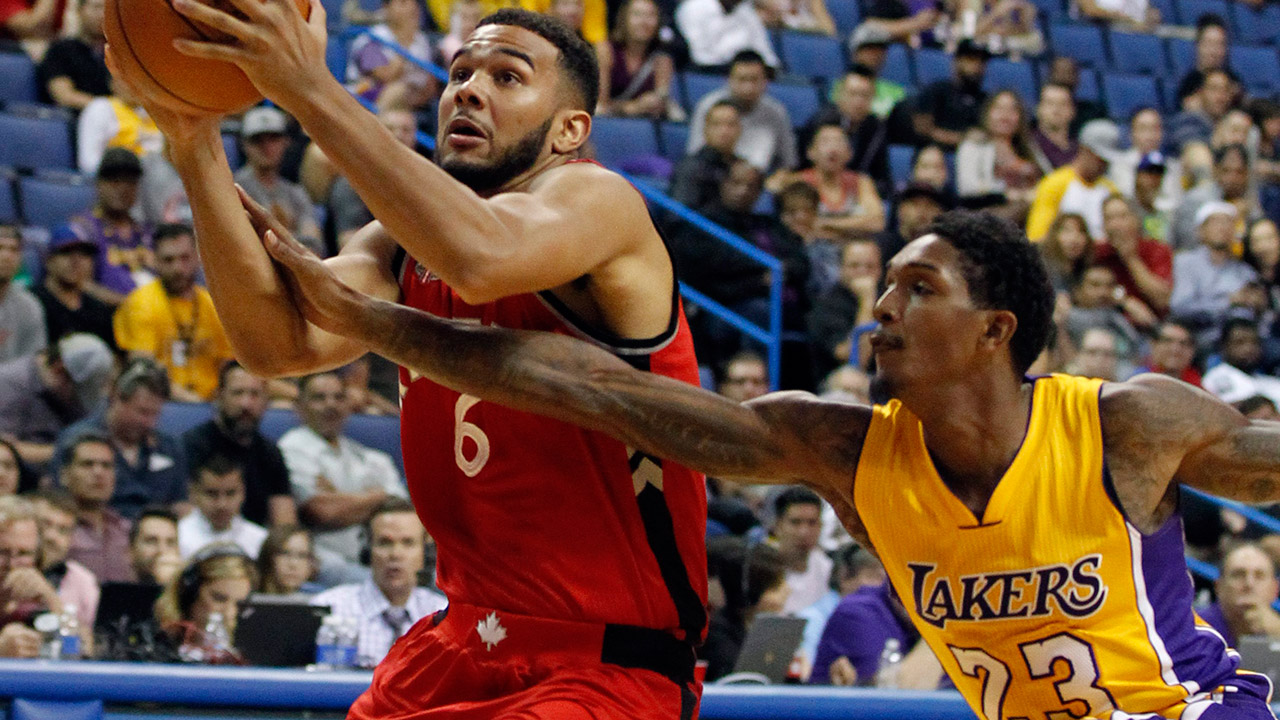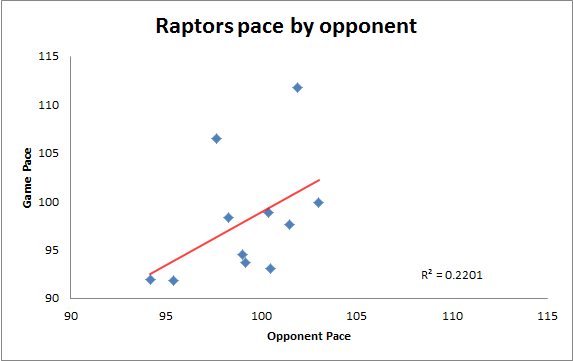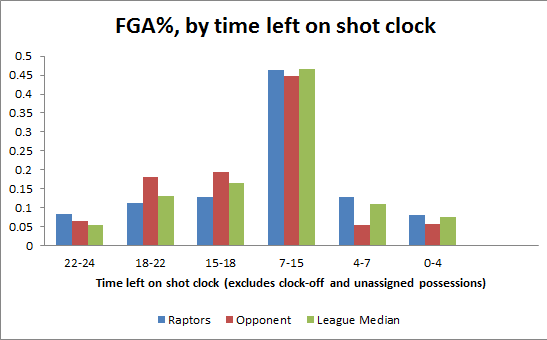Grit and grind. Pace and space. Seven seconds or less. While some franchises have locked into clear identities when it comes to their style of play, the Toronto Raptors are still trying to find their tempo.
Throughout the preseason, head coach Dwane Casey focused on the defensive end of the floor. With four new players in a nine-man rotation that produced abhorrent defensive results a year ago and significantly altered pick-and-roll coverages, putting defense first made sense. With players like DeMar DeRozan and Kyle Lowry capable of shouldering the burden in lean times, the Raptors could be patient with their offensive system.
As the team struggles to find its footing early in games—the Raptors own the league’s worst first-quarter offence—increased pace has come up as a potential panacea.
“I think we felt that we were not playing the style of basketball that we knew we could play at both ends,” an unhappy DeMar DeRozan said after Friday’s victory over the New Orleans Pelicans. “We had to pick it up and get some stops, try and get out in transition and change the tempo of the game to our pace.”
What “their pace” is, however, remains an enormous question mark.
The Raptors ranked 19th in the NBA in pace through games played Monday, averaging 97.99 possessions per 48 minutes. That’s not inflated by opponents, as their competition has averaged almost exactly a league-average pace. Individual teams don’t show a strong ability to impact a single game’s pace, but—Tuesday’s game against the defending champions excepted—the Raptors have done well to slow things down a modest degree.
If that’s what they’re trying to do.
The slower pace is hardly a surprise given Toronto ranked 20th last year and were the league’s slowest team in the preseason. Preseason pace is moderately predictive of regular-season pace, and the league’s pace doesn’t tend to change a great deal as the season rolls along. The Raptors have also dramatically slowed things down (to a bottom-five, 95.53-possession pace) since the first two games of the season, so this is likely an early confirmation that the Raptors will be more Memphis Grizzlies than Golden State Warriors.
That was a somewhat surprising suggestion to DeRozan.
“You think so?” DeRozan said Friday. “Honestly, man, we’re still trying to figure it out offensively.”
Pace comes from both ends of the floor, and a higher tempo isn’t necessarily good or bad—it mostly just is. Teams can succeed at a plodding pace, and last year’s top 10 offences were almost exactly league average in pace as a group.
Shots earlier in the clock tend to produce cleaner looks, especially from high-efficiency areas outside the arc and at the rim, as stops at the other end lead to easier transition baskets the other way. Teams that force turnovers and get defensive stops will be afforded more of those opportunities, but defensive stops are easier to come by if an opponent is forced into difficult end-of-clock scenarios. Pace, then, is determined by a cornucopia of factors extending beyond transition offence.
DeRozan and Casey seem to be in agreement that pushing the ball a bit more may help, with the Raptors ranking 26th in fast-break points and seeing too many possessions stretch late in the shot clock.
“We want to get it up the floor fast,” Casey said Friday. “It doesn’t matter for us, a quick shot. We want to make sure we get up and get into our offence quicker. We’re fighting the shot clock a little too much for our liking. But I don’t want to get frenetic.”
The following table shows an estimated distribution of Raptors’ and opponents’ possessions based on data from NBA.com. There are a few minor issues with the shot-clock data, but this represents an estimate of when possessions end, excluding clock-off scenarios.
As Casey suggests, the Raptors tend to fight the clock a bit more than others, and their effective field-goal percentage drops to an unsightly 39.8 percent once the clock hits four. Considering the Raptors are average at forcing turnovers and slightly above average on their own glass, this doesn’t appear to be the fault of the defence, but of the offence still figuring things out.
At the same time, the Raptors aren’t doing a great job getting back in transition, as opponents are getting more than their fair share of early clock looks. That may have something to do with the Raptors ranking fourth in offensive rebound rate, with the team leading the league in the portion of offensive rebounds they chase (50.5 percent), according to data from Nylon Calculus.
“We really don’t emphasize offensive rebounding,” Casey said. “That’s amazing, and we don’t even talk about it. Just because of the fact that I believe in getting back. I think that’s the safest route to start your defence.”
There are competing ends here, to a degree. The Raptors want to goose their offence by pushing the tempo while also slowing down their opponents at the other end.
The best way to do that may be the one thing most think of when considering a fast-paced team: going small. The Raptors have played much faster when Lowry and fellow point guard Cory Joseph share the floor, and the team’s lost almost nothing on the defensive end in those minutes. Toronto’s closing unit (with Joseph joining the starters in place of Luis Scola) has been particularly effective at serving both ends, and now that DeMarre Carroll has returned, Casey may opt to lean on it more heavily.




